MCQ on Some Basic Concepts of Chemistry Class XI
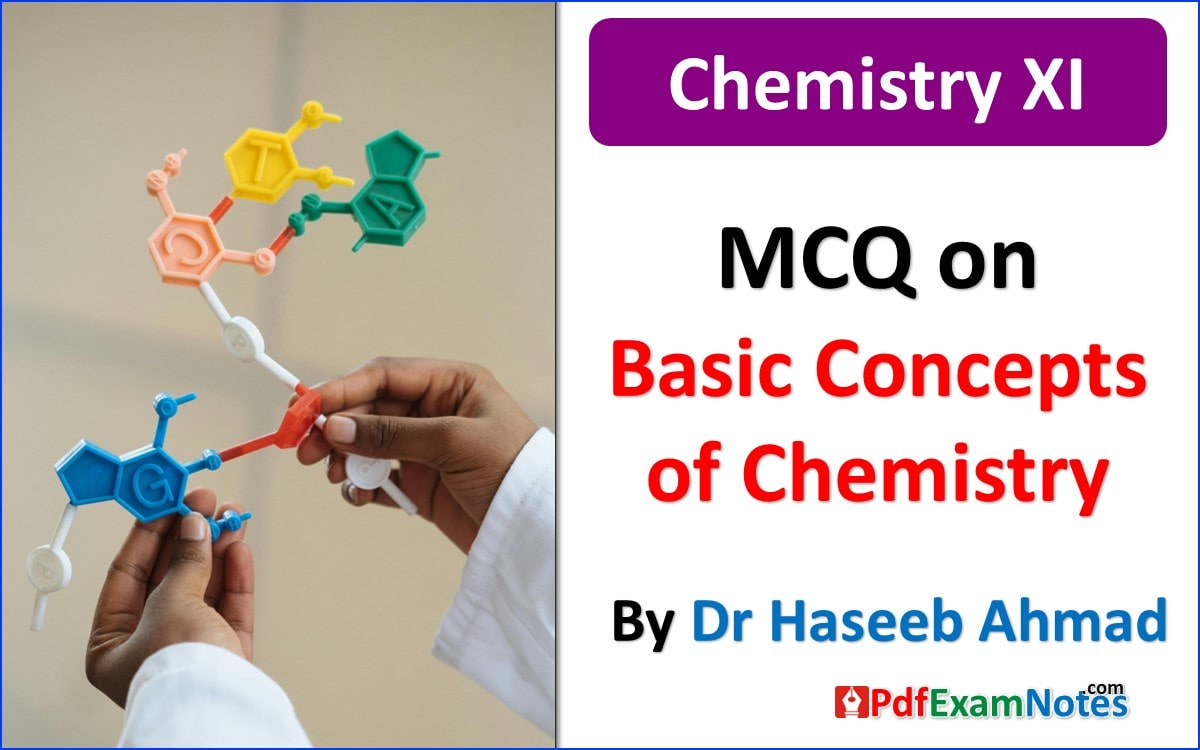
Dear Students,
We have created a MCQ question series for you to boost your knowledge. These questions are from basic concepts of chemistry for class XI students.
01. What is the arrangement of particles in solids?
a) Loosely packed
b) Random
c) Closely packed
d) Free to move
Answer: c
02. What type of motion can particles in solids have?
a) Translational motion
b) Rotational motion
c) Vibratory motion
d) Random motion
Answer: c
03. What gives definite regular shape to crystals in solids?
a) Vibratory motion of particles
b) Random arrangement of particles
c) Closely packed particles
d) Inter-particle forces
Answer: c
04. What are the inter-particle forces in solids?
a) Weak
b) Strong
c) Non-existent
d) Opposite of attractive
Answer: b
05. Do solids have a definite shape and volume?
a) Definite shape, no definite volume
b) No definite shape, definite volume
c) Definite shape, definite volume
d) No definite shape, no definite volume
Answer: c
06. What is the arrangement of particles in liquids?
a) Closely packed
b) Random
c) Loosely packed
d) Free to move
Answer: b
07. Do liquids have a fixed shape?
a) Yes
b) No
Answer: b
08. Do liquids have a definite volume?
a) Yes
b) No
Answer: a
09. What happens to the attractive forces between particles in liquids compared to solids?
a) They are stronger
b) They are weaker
c) They are the same
Answer: b
10. What shape do gases have?
a) Definite shape
b) No definite shape
Answer: b
11. What volume do gases have?
a) Definite volume
b) No definite volume
Answer: b
12. How are the particles arranged in gases?
a) Closely packed
b) Random
c) Loosely packed
d) Fixed
Answer: c
13. Are the inter-particle forces in gases strong or weak?
a) Strong
b) Weak
Answer: b
14. Can gases move freely throughout a container?
a) Yes
b) No
Answer: a
15. Which type of matter has the highest amount of empty spaces between particles?
a) Solids
b) Liquids
c) Gases
d) All have the same amount
Answer: c
16. What type of motion do particles in gases have?
a) Vibratory motion
b) Rotational motion
c) Translational motion
d) Stationary
Answer: c
17. Which type of matter has the strongest inter-particle forces?
a) Solids
b) Liquids
c) Gases
d) All have the same strength
Answer: a
18. What allows particles in liquids to move past each other?
a) Strong inter-particle forces
b) Weak inter-particle forces
c) No inter-particle forces
d) Random motion of particles
Answer: b
19. Which type of matter takes the shape of its container?
a) Solids
b) Liquids
c) Gases
d) None of the above
Answer: b
20. Which type of matter has a definite shape but not a definite volume?
a) Solids
b) Liquids
c) Gases
d) All have a definite volume
Answer: c
21. What is the regular ordered arrangement of particles in solids called?
a) Lattice
b) Crystal
c) Molecule
d) Atom
Answer: a
22. Which type of matter has a highly ordered arrangement of particles?
a) Solids
b) Liquids
c) Gases
d) All have the same arrangement
Answer: a
23. What allows particles in liquids to take the shape of their container?
a) Strong inter-particle forces
b) Weak inter-particle forces
c) No inter-particle forces
d) Vibratory motion of particles
Answer: b
24. What type of motion do particles in solids have?
a) Vibratory motion
b) Rotational motion
c) Translational motion
d) Stationary
Answer: a
25. Which of the following is not a characteristic of gases?
a) Loosely packed particles
b) Definite shape
c) Definite volume
d) Fast particle movement
Answer: b
26. What is the chemical classification of matter based on?
a) Physical properties
b) Chemical properties
c) Composition
d) Size
Answer: c
27. What are the two main categories of chemical composition of matter?
a) Solids and liquids
b) Mixtures and pure substances
c) Atoms and molecules
d) Metals and nonmetals
Answer: b
28. What is a pure substance?
a) A substance with variable composition
b) A substance with only one type of particle
c) A substance with strong inter-molecular forces
d) A substance that is a liquid at room temperature
Answer: b
29. Can the constituents of pure substances be separated by simple physical methods?
a) Yes
b) No
c) Sometimes
d) It depends on the substance
Answer: b
30. What are the two subcategories of pure substances?
a) Elements and mixtures
b) Compounds and mixtures
c) Mixtures and solutions
d) Elements and compounds
Answer: d
31. Which of the following statements defines an element?
a) A pure substance containing more than one kind of element.
b) A combination of two or more elements or compounds in any proportion so that the components do not lose their identity.
c) A pure substance which can be decomposed into simpler substances by chemical methods.
d) The simplest form of a pure substance which can neither be decomposed into nor built from simpler substances by ordinary physical or chemical methods.
Answer: d
32. Which of the following elements is a metal?
a) Carbon
b) Nitrogen
c) Oxygen
d) Copper
Answer: d
33. Which of the following statements about compounds is true?
a) A compound is a homogeneous mixture of two or more substances.
b) A compound can be decomposed into its constituent elements by ordinary physical or chemical methods.
c) A compound always contains the same elements in varying proportions by weight.
d) The properties of a compound are totally different from the elements from which it is formed.
Answer: d
34. Which of the following is an example of an inorganic compound?
a) Glucose
b) Sucrose
c) Common salt
d) Starch
Answer: c
35. Which of the following is an example of a heterogeneous mixture?
a) Air
b) Brass
c) Sugar solution in water
d) Mixture of iron filings, common salt, and sulfur
Answer: d
36. Which of the following statements about homogeneous mixtures is true?
a) The components of a homogeneous mixture can be seen even under a powerful microscope.
b) Homogeneous mixtures are also called solutions.
c) A homogeneous mixture is said to be heterogeneous if its composition is not uniform throughout.
d) Homogeneous mixtures consist of two or more parts which have different compositions.
Answer: b
37. Which of the following statements about metals is true?
a) Metals are generally non-lustrous and poor conductors of heat and electricity.
b) Metals possess characteristics such as bright lustre, hardness, and ability to conduct electricity and heat.
c) Metals are generally malleable and ductile.
d) About 80% of the known elements are non-metals.
Answer: b
38. Which of the following statements about metalloids is true?
a) Metalloids are elements which have characteristics common to both metals and non-metals.
b) Metalloids are generally non-lustrous and poor conductors of heat and electricity.
c) Metalloids are generally malleable and ductile.
d) Metalloids possess characteristics such as bright lustre, hardness, and ability to conduct electricity and heat.
Answer: a
39. Which of the following statements about mixtures is true?
a) A mixture is a pure substance containing two or more than two elements combined together in a definite proportion by mass.
b) A mixture contains more than one kind of pure form of matter, known as substance.
c) The composition of a mixture is always fixed and cannot be varied.
d) The substances present in a mixture lose their identity.
Answer: b (Easy)
40. Which of the following is an example of an organic compound?
a) Common salt
b) Carbon dioxide
c) Marble
d) Carbohydrates
Answer: d (Easy)
41. What is the abbreviation used for the International System of Units?
a) ISU
b) SI
c) IU
d) SU
Answer: b
42. When were the SI units adopted by the General Conference of Weights and Measures?
a) 1950
b) 1960
c) 1970
d) 1980
Answer: b
43. How many base units are there in the SI system?
a) Four
b) Five
c) Six
d) Seven
Answer: d
44. Which of the following is not one of the base units in the SI system?
a) Meter
b) Kelvin
c) Gram
d) Second
Answer: c
45. What is the unit of temperature according to the SI system?
a) Celsius
b) Fahrenheit
c) Kelvin
d) Rankine
Answer: c
46. How is the Celsius temperature related to the Kelvin temperature?
a) Kelvin temperature (K) = °C + 32
b) Kelvin temperature (K) = 9/5(°C) + 32
c) Kelvin temperature (K) = °C + 273.15
d) Kelvin temperature (K) = °C – 273.15
Answer: c
47. Which of the following is not a unit of length commonly used in chemistry?
a) Angstrom (Å)
b) Nanometer (nm)
c) Picometer (pm)
d) Micrometer (μm)
Answer: d
48. What is the size of an Angstrom (Å) unit of length?
a) 10-9 m
b) 10-10 m
c) 10-11 m
d) 10-12 m
Answer: b
49. Which of the following is a valid conversion between SI units?
a) 1 nm = 10-11 m
b) 1 pm = 10-9 m
c) 1 nm = 10-9 m
d) 1 pm = 10-10 m
Answer: c
50. Which of the following is not a fundamental scientific quantity in the SI system?
a) Length
b) Mass
c) Time
d) Energy
Answer: d
51. What is the abbreviation used for the unit of electric current in the SI system?
a) AC
b) DC
c) A
d) V
Answer: c
52. What is the abbreviation used for the unit of luminous intensity in the SI system?
a) L
b) I
c) C
d) Cd
Answer: d
53. Which of the following is the correct symbol for the unit of mass in the SI system?
a) m
b) kg
c) s
d) K
Answer: b
54. Which of the following is not a valid SI prefix?
a) Mega (M)
b) Kilo (k)
c) Milli (m)
d) Centi (c)
e) Deca (da)
Answer: e
55. Which of the following units is commonly used to measure the amount of substance?
a) Mole (mol)
b) Meter (m)
c) Second (s)
d) Kelvin (K)
Answer: a
56. What does accuracy measure?
a) The closeness of an experimental value to the mean value
b) The difference between the experimental value and the true value
c) The difference between the mean value and the true value
d) The correctness of a measurement
Answer: b
57. If the mean value of different measurements is close to the true value, what can be said about the measurement?
a) It is precise
b) It is accurate
c) It is both precise and accurate
d) It is neither precise nor accurate
Answer: b
58. What is precision a measure of?
a) The difference between the mean value and the true value
b) The difference between two or more measurements of the same quantity
c) The correctness of a measurement
d) The closeness of an experimental value to the mean value
Answer: b
59. What is the difference between accuracy and precision?
a) Accuracy measures the difference between the mean value and the true value, while precision measures the difference between two or more measurements of the same quantity
b) Accuracy measures the correctness of a measurement, while precision measures the closeness of an experimental value to the mean value
c) Accuracy and precision are the same thing
d) Accuracy measures the closeness of an experimental value to the mean value, while precision measures the difference between the mean value and the true value
Answer: a
60. When the true value of a quantity is not known, what can be calculated instead of accuracy?
a) The difference between the mean value and the true value
b) The difference between two or more measurements of the same quantity
c) The correctness of a measurement
d) The precision of the measurements
Answer: d
61. What is the difference between the two methods (A and B) used to analyze the sample of a compound?
a) Method A gives a larger mean value than method B
b) Method B gives a larger mean value than method A
c) Method A gives a more precise result than method B
d) Method B gives a more accurate result than method A
Answer: d
62. Which unit is not a base unit of the International System of Units (SI)?
a) Kilogram
b) Candela
c) Angstrom
d) Second
Answer: c
63. What is the relationship between Celsius and Kelvin temperature scales?
a) 0 degrees Celsius is equal to 0 Kelvin
b) 0 degrees Celsius is equal to -273.15 Kelvin
c) 0 degrees Celsius is equal to 273.15 Kelvin
d) 100 degrees Celsius is equal to 373.15 Kelvin
Answer: c
64. Which unit is commonly used as a unit of length in chemistry and is almost the same size as the size of an atom?
a) Nanometer (nm)
b) Picometer (pm)
c) Angstrom (Å)
d) Meter (m)
Answer: c
65. How many base units does the International System of Units (SI) have?
a) Four
b) Five
c) Six
d) Seven
Answer: d
66. What is the purpose of expressing large or small numbers in scientific notation?
a) To make them easier to write down
b) To make them sound more scientific
c) To make them more accurate
d) To make them harder to understand
Answer: a
67. What is the general form of a number expressed in scientific notation?
a) N × 10n, where N is a single non-zero digit and n is an exponent having positive or negative values
b) N × 10n, where N is a single zero digit and n is an exponent having positive or negative values
c) N × 10n, where N is any number and n is an exponent having positive or negative values
d) N × 10n, where N is a single non-zero digit and n is an exponent having only positive values
Answer: a
68. What is the value of the exponent for the number 246.38 when expressed in scientific notation?
a) 2
b) 3
c) 4
d) 5
Answer: b
69. How is the exponent determined when expressing a number in scientific notation?
a) By counting the number of digits in the number
b) By adding or subtracting the number of decimal places the decimal point is moved
c) By rounding the number to the nearest power of 10
d) By multiplying the number by a fixed exponent value
Answer: b
70. What is the scientific notation of the number 0.00013872?
a) 1.3872 × 10-5
b) 1.3872 × 10-4
c) 1.3872 × 10-3
d) 1.3872 × 10-2
Answer: b
71. Who postulated the law of conservation of mass?
a) Isaac Newton
b) Antoine Lavoisier
c) Albert Einstein
d) Galileo Galilei
Answer: b
72. What is the law of conservation of mass?
a) During any chemical change, the total mass of the products is less than the total mass of the reactants.
b) During any physical or chemical change, the total mass of the products is greater than the total mass of the reactants.
c) During any physical or chemical change, the total mass of the products is equal to the total mass of the reactants.
d) During any chemical change, the total mass of the products is not related to the total mass of the reactants.
Answer: c
73. What is another name for the law of conservation of mass?
a) Law of Physical Change
b) Law of Chemical Change
c) Law of Indestructibility of Matter
d) Law of Inertia
Answer: c
74. What is Landolt’s experiment used for?
a) To verify the law of conservation of energy
b) To verify the law of conservation of mass
c) To determine the melting point of a substance
d) To determine the boiling point of a substance
Answer: b
75. What happens when sodium chloride and silver nitrate are mixed together?
a) A red ppt. of silver chloride is formed.
b) A blue ppt. of silver chloride is formed.
c) A white ppt. of silver chloride is formed.
d) A green ppt. of silver chloride is formed.
Answer: c
76. According to John Dalton’s atomic theory, matter is made up of extremely small indivisible and indestructible ultimate particles called:
a) Atoms
b) Molecules
c) Protons
d) Electrons
Answer: a
77. According to the theory, atoms of the same element are identical in all respects including:
a) Shape
b) Size
c) Mass
d) Chemical properties
e) All of the above
Answer: e
78. Atoms of different elements are different in all respects and have different:
a) Masses
b) Chemical properties
c) Shapes
d) Sizes
e) A and B
Answer: e
79. What is the smallest unit that takes part in chemical combinations according to the theory?
a) Molecule
b) Atom
c) Electron
d) Proton
Answer: b
80. According to John Dalton’s atomic theory, atoms of two or more elements combine in a fixed ratio to form:
a) Molecules
b) Compounds
c) Solutions
d) Mixtures
Answer: b
81. According to the theory, can atoms be created or destroyed during any physical or chemical change?
a) Yes, they can be created or destroyed
b) No, they can neither be created nor destroyed
c) Only in physical changes
d) Only in chemical changes
Answer: b
82. What do chemical reactions involve according to the theory?
a) Only combination
b) Only separation
c) Only rearrangement
d) Combination, separation, or rearrangement of atoms
Answer: d
83. Which of the following is NOT a basic postulate of John Dalton’s atomic theory?
a) Atoms of the same element are identical in all respects.
b) Atoms can neither be created nor destroyed during any physical or chemical change.
c) Atoms of different elements are different in all respects and have different masses and chemical properties.
d) Atoms are the smallest unit of matter.
e) Atoms of different elements have the same mass.
Answer: e
84. What are atoms of the same element identical in according to the theory?
a) Mass only
b) Size and shape only
c) Chemical properties only
d) All respects
Answer: d
85. According to the theory, what do atoms of two or more elements combine in to form compound atoms?
a) Fixed mass
b) Fixed ratio
c) Variable mass
d) Variable ratio
Answer: b
86. Why did Dalton’s atomic theory become significant in the beginning of the 19th century?
a) It gave a powerful initiative to scientists
b) It explained the laws of gaseous volumes
c) It explained the laws of chemical combination by mass and gaseous volumes
d) It failed to explain any laws of chemical combination
Answer: a
87. What was the main achievement of Dalton’s atomic theory?
a) It explained the laws of chemical combination
b) It explained why atoms of different elements have different masses and sizes
c) It explained the nature of forces that bind atoms together in a molecule
d) It explained how and why atoms of different elements combine to form molecules
Answer: a
88. What are the main drawbacks of Dalton’s atomic theory?
a) It failed to explain the law of gaseous volumes and the nature of forces that bind together atoms in a molecule
b) It could explain the laws of chemical combination but not the law of gaseous volumes
c) It could not explain how atoms of different elements combine to form compound atoms or molecules
d) It gave no satisfactory explanation between the ultimate particle of an element and that of a compound
e) All of the above
Answer: e
89. According to the theory, what could it not explain regarding atoms of different elements?
a) Masses
b) Sizes
c) Valencies
d) All of the above
Answer: d
90. Why did Dalton’s atomic theory become outdated and modified in the 20th century?
a) Due to the discovery of laws of gaseous volumes
b) Due to the discovery of the nature of forces that bind atoms together in a molecule
c) Due to the discovery of electrons, protons, and neutrons
d) Due to the discovery of the ultimate particle of an element and that of a compound
Answer: c
91. What are subatomic particles?
a) particles that are smaller than atoms
b) particles that are larger than atoms
c) particles that make up atoms
d) particles that have no relation to atoms
Answer: c
92. What are isotopes?
a) atoms of different elements with different atomic masses
b) atoms of the same element with different atomic masses
c) atoms that possess the same mass but have different chemical properties
d) atoms that possess the same properties but have different masses
Answer: b
93. What are isobars?
a) atoms of different elements with different atomic masses
b) atoms of the same element with different atomic masses
c) atoms that possess the same mass but have different chemical properties
d) atoms that possess the same properties but have different masses
Answer: a
94. Which of the following statements is true about the smallest particle that takes part in chemical reactions?
a) It is made up of subatomic particles.
b) It is not composed of subatomic particles.
c) It is larger than atoms.
d) It is not involved in chemical reactions.
Answer: a
95. What is transmutation?
a) The process of converting atoms of one element into atoms of another element.
b) The process of converting atoms into subatomic particles.
c) The process of converting subatomic particles into atoms.
d) The process of converting energy into mass.
Answer: a
96. According to Einstein’s equation, what is interconvertible?
a) Mass and energy
b) Subatomic particles and energy
c) Atoms and energy
d) Mass and subatomic particles
Answer: a
97. What happens to the atom during chemical reactions?
a) It is changed into atoms of other elements.
b) It is indestructible.
c) Its mass is converted into energy.
d) It is composed of subatomic particles.
Answer: b
98. What is the ultimate particle of an element called?
a) Molecule
b) Compound
c) Atom
d) Element
Answer: c
99. What happens if we keep on breaking a particle of an element?
a) It becomes smaller and smaller until it disappears
b) It becomes a molecule
c) It becomes a compound
d) It becomes an ion
Answer: a
100. Are all elements composed of atoms?
a) Yes
b) No
Answer: a
101. Which of the following elements is capable of independent existence?
a) Oxygen
b) Nitrogen
c) Helium
d) Carbon
Answer: c
102. What is the ultimate particle of a chemical compound called?
a) Atom
b) Molecule
c) Element
d) Ion
Answer: b
103. How many types of atoms are there?
a) 118
b) 100
c) 90
d) 200
Answer: a
104. Which of the following elements is not capable of independent existence?
a) Helium
b) Nitrogen
c) Oxygen
d) Carbon
Answer: b
105. What happens when two or more atoms of different elements combine?
a) A compound is formed
b) An element is formed
c) A molecule is formed
d) An ion is formed
Answer: a
106. What are homo-atomic molecules?
a) Molecules made up of atoms of different elements
b) Molecules made up of atoms of the same element
c) Molecules made up of ions
d) Molecules made up of isotopes
Answer: b
107. Which of the following gases is not a homo-atomic molecule?
a) Hydrogen gas
b) Chlorine gas
c) Nitrogen gas
d) Carbon dioxide
Answer: d
108. What is the atomicity of a monoatomic molecule?
a) One
b) Two
c) Three
d) Four
Answer: a
109. Which of the following is a triatomic molecule?
a) O2
b) H2
c) O3
c) N2
Answer: c
110. What is the atomicity of a polyatomic molecule?
a) One
b) Two
c) Three
d) More than three
Answer: d
111. What is the atomicity of N2?
a) Monoatomic
b) Diatomic
c) Triatomic
d) Polyatomic
Answer: b
112. Which of the following is a polyatomic molecule?
a) He
b) Ne
c) O3
d) H2
Answer: c
113. What is the atomicity of P4?
a) Monoatomic
b) Diatomic
c) Triatomic
d) Tetraatomic
Answer: d
114. What is the meaning of the term “atomicity”?
a) The number of atoms in a molecule of an element
b) The number of protons in an atom
c) The number of neutrons in an atom
d) The number of electrons in an atom
Answer: a
115. Which of the following gases is a diatomic molecule?
a) Carbon monoxide
b) Methane
c) Hydrogen chloride
d) Oxygen
Answer: d
116. What is the atomicity of S8?
a) Monoatomic
b) Diatomic
c) Triatomic
d) Polyatomic
Answer: d
117. Which of the following gases is a monoatomic molecule?
a) Nitrogen
b) Oxygen
c) Helium
d) Carbon dioxide
Answer: c
118. What is the atomicity of O2?
a) Monoatomic
b) Diatomic
c) Triatomic
d) Polyatomic
Answer: b
119. What is the atomicity of H2?
a) Monoatomic
b) Diatomic
c) Triatomic
d) Polyatomic
Answer: b
120. What is a heteroatomic molecule?
a) A molecule made up of atoms of the same element
b) A molecule made up of atoms of different elements
c) A molecule with only one atom
d) A molecule with more than three atoms
Answer: b
121. Which of the following is a heteroatomic molecule?
a) Oxygen gas
b) Neon gas
c) Water
d) Nitrogen gas
Answer: c
122. What is the atomicity of PCl5?
a) Monoatomic
b) Diatomic
c) Triatomic
d) Polyatomic
Answer: d
123. Which of the following is not a heteroatomic molecule?
a) Carbon monoxide
b) Ammonia
c) Methane
d) Hydrogen gas
Answer: d
124. What is the atomicity of CO2?
a) Monoatomic
b) Diatomic
c) Triatomic
d) Polyatomic
Answer: d
125. Which of the following is a triatomic molecule?
a) Oxygen gas
b) Carbon dioxide
c) Ammonia
d) Hydrogen chloride
Answer: c
126. What is the ultimate particle of an element called?
a) Molecule
b) Atom
c) Compound
d) Element
Answer: b
127. Which of the following elements are capable of independent existence?
a) Hydrogen
b) Oxygen
c) Nitrogen
d) Helium
e) Neon
f) Argon
Answer: d, e, f
128. What is the term used to classify molecules based on the number of atoms they contain?
a) Atomicity
b) Isotopy
c) Ionicity
d) Covalency
Answer: a
129. What is the standard substance used to express atomic masses?
a) Oxygen
b) Carbon-12
c) Hydrogen
d) Chlorine
Answer: b
130. What is the definition of atomic mass?
a) The mass of an atom of an element compared to the mass of an atom of hydrogen
b) The mass of an atom of an element compared to the mass of an atom of carbon-12
c) The mass of an atom of an element compared to the mass of an atom of oxygen
d) The mass of an atom of an element compared to the mass of an atom of chlorine
Answer: b
131. What is a mole?
a) A unit for counting atoms, molecules, ions, etc.
b) A small animal that burrows underground
c) A type of sauce used in Mexican cuisine
d) A type of bird found in North America
e) A unit for measuring length
Answer: a
132. What is the Avogadro number?
a) The number of apples in a dozen
b) The number of birds in a flock
c) The number of particles in a mole
d) The number of stars in the Milky Way galaxy
e) The number of bones in the human body
Answer: c
133. Who is Amedeo Avogadro?
a) An Italian chef known for his pasta dishes
b) An Italian painter famous for his landscapes
c) An Italian scientist who discovered the Avogadro number
d) An Italian politician who served as Prime Minister
e) An Italian singer who won the Eurovision Song Contest
Answer: c
134. What is the relationship between a mole and Avogadro’s number?
a) A mole is a type of animal that Avogadro studied
b) A mole is equal to Avogadro’s number of particles
c) A mole is a unit of length used by Avogadro
d) A mole is a type of currency used in Avogadro’s country
e) A mole is a type of food that Avogadro enjoyed
Answer: b
135. What is the significance of using the unit mole in chemistry?
a) It allows chemists to count atoms, molecules, ions, etc. easily
b) It is a traditional unit of measurement
c) It is a unit used only by chemists
d) It is a unit that is no longer used in modern chemistry
e) It is a unit used only for measuring length
Answer: a
We will continue to bring more questions for you, so you can subscribe to our blog so that you can get notifications of each of our posts in your Inbox.
Disclaimer: We are not the owner of this PDF or study material, neither its been created or scanned from our side. We are only providing the material which are already available on the internet. If Any violates the law or there is an issue for the credit and removal, Please contact us here and fill the form.
अस्वीकरण: PdfExamNotes.com वेबसाइट ने, ना तो इस PDF को बनाया है और ना ही स्कैन किया है। यह पीडीएफ फाइल इंटरनेट से डाउनलोड करके यहाँ पर शेयर की गई है या फिर किसी थर्ड पार्टी से लिंक लेकर, इस ब्लॉग के साथ जोड़ी गयी है। यदि इसमें भी हम किसी प्रकार का कॉपीराइट नियम का उल्लंघन कर रहे हैं या आप क्रेडिट लेना चाहते हैं तो इसके लिए आप हमें ये फॉर्म भर कर बता सकते हैं।
Note: आशा करते हैं कि आपको ये पोस्ट ज़रूर पसंद आया होगा, इसलिए आप इसे अपने दोस्तों के साथ भी ज़रूर शेयर करें ताकि वो भी इसका लाभ उठा सकें। We hope you liked this post, so share it with your friends so that they can also benefit from it.
ये PDF Book विभिन्न परीक्षाओं जैसे UPSC, IAS, IPS, RAS, IFS, UPPSC, MPPSC, BPSC, SSC CGL, CHSL, CPO,, IBPS PO, SBI PO, Railway, RRB NTPC, ASM, Group D, State PSC, Sub Inspector, Constable, Patwari, LDC, CTET, UPTET, Super TET, Teaching, Revenue Officer और अतिरिक्त परीक्षाओं के लिए उपयोगी है।
हम आपके लिए ऐसे और भी पीडीएफ नोट्स लाते रहेंगे, इसलिए हमारे ब्लॉग को सब्सक्राइब करें ताकि आप हमारे हर पोस्ट का नोटिफिकेशन अपने इनबॉक्स में पा सकें।
We will continue to bring more such PDF notes for you, so subscribe to our blog so that you can get notifications of each of our posts in your Inbox.
नवीनतम नोट्स के लिए आप हमारे सभी सोशल मीडिया चैनलों से भी जुड़ सकते हैं।
You can also join all our social media channels for latest notes.
यदि आपका कोई प्रश्न है तो कमेंट बॉक्स में कमेंट करें।
If you have any question, leave comments in the comment box.





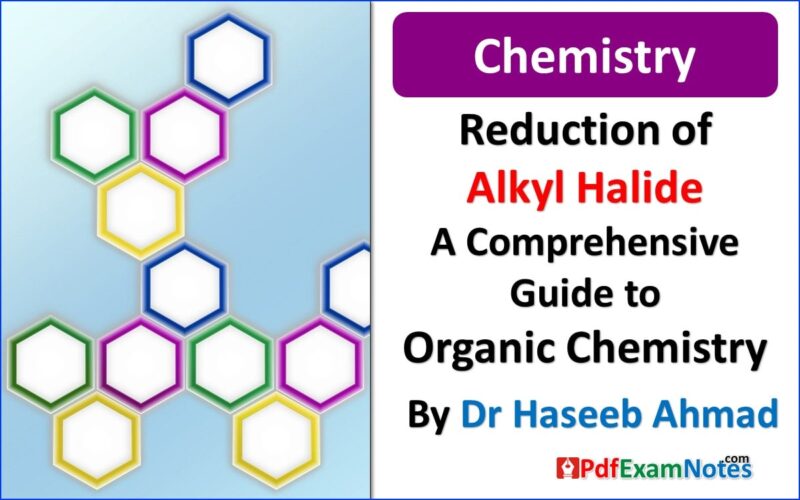
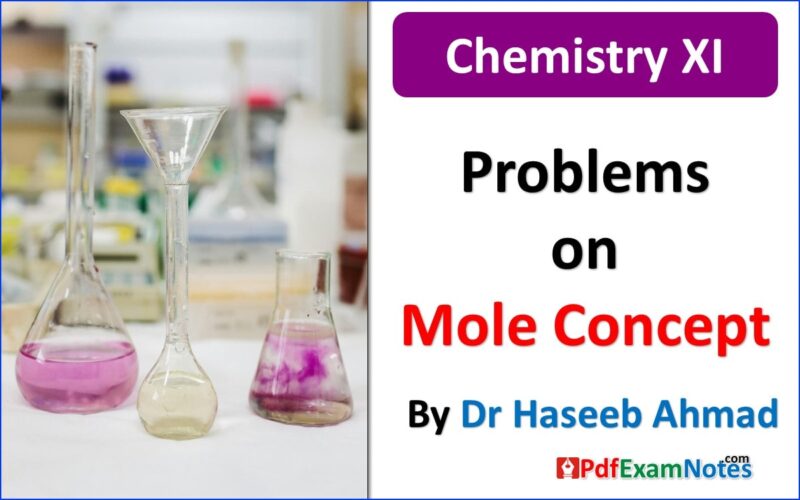


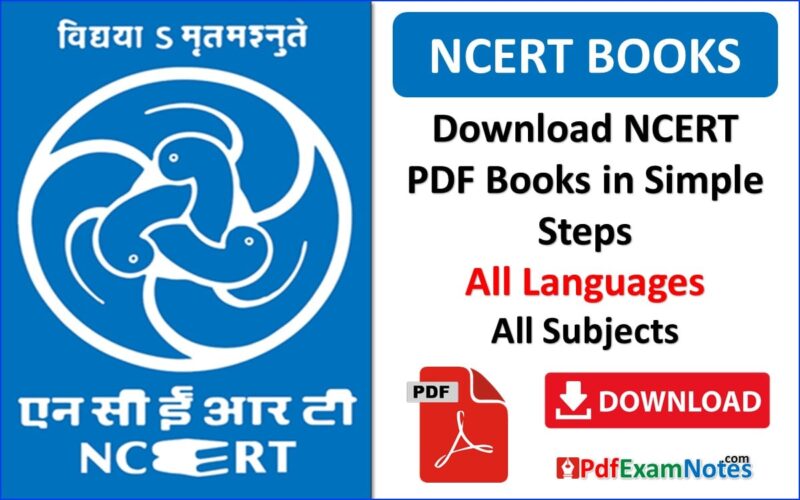





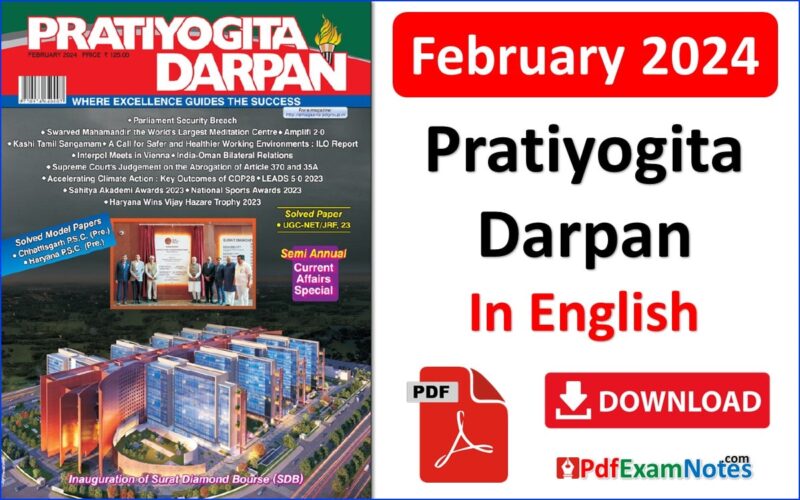

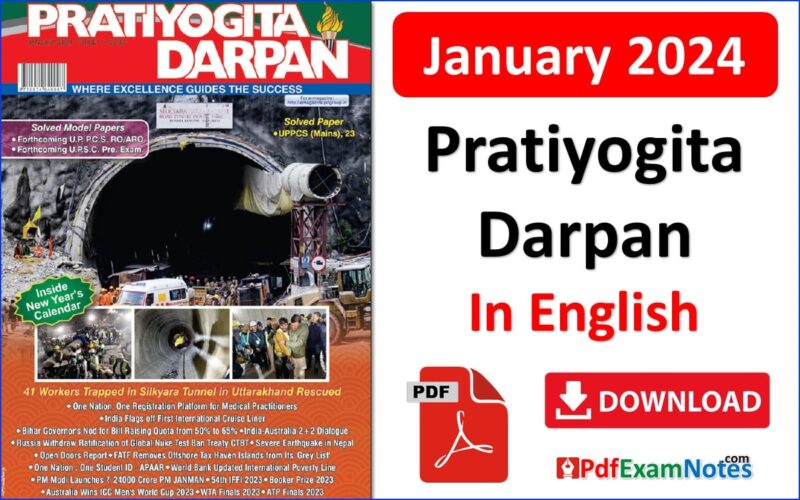


0 Comments